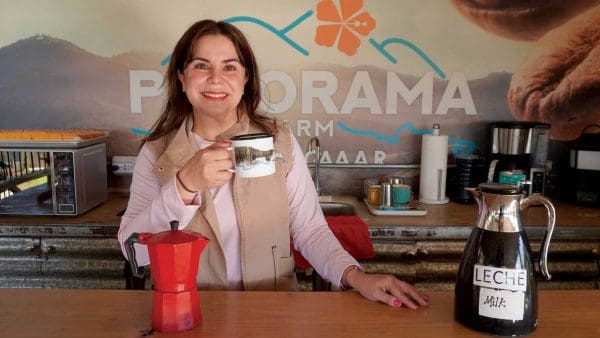
The academic path that led Christine Jang-Trettien PhD ’20 to Baltimore to lead a study of the city’s most impoverished neighborhoods was a long and winding one.
“My background is all over the place, a lot of moving around,” says the Indiana native, who grew up in a Baltimore suburb and a northern Indiana college town, sandwiched around a half-dozen years in her parents’ native South Korea.
After earning her undergraduate degree in art and art history at Indiana University, she moved to New York City for graduate school. While living first at Broadway and 116th Street, then Broadway and 123rd, and finally Broadway and 145th Street in Manhattan, she noticed the dramatic differences in neighborhoods along those 30 blocks. “Things change quite a bit, going from fairly wealthy and white around the Columbia University campus to a predominantly Dominican area,” she says.
A New Start
Her career path also changed after earning her master’s degree in international development from Columbia University. “After a while, global goals and global solutions became too abstract,” she says. Her focus shifted to American cities and spatial inequalities, and what seemed to prevent certain neighborhoods from changing and improving.
While at Columbia, she met Blake Trettien, a Hopkins graduate studying international development at New York University’s law school. “He put Hopkins on the radar for me,” she says.
The opportunity to work with Hopkins Department of Sociology professors Kathryn Edin and Stefanie DeLuca—then part of the Poverty and Inequality Research Lab—sealed the deal and decided her move to Baltimore.
“The most ideal graduate experience [includes] very supportive mentors, very supportive colleagues,” she says. “I was responsible for 50 graduate and undergraduate students who conducted 400 interviews, knocking on doors and talking to people in their homes. It was team-based, which is unusual for qualitative research. That allowed us to conduct better interviews, because we were constantly providing feedback to one another. It was very much a collaborative effort. We still collaborate on papers.”
Researching Equity
Her study on neighborhoods at the Poverty Lab began in 2015 as an examination of the decisions made by landlords who operate in areas characterized by high rates of disinvestment. “Baltimore has a lot of vacant and abandoned homes. We wanted to understand the tradeoffs landlords made and why some choose to maintain their properties while others divest and abandon their properties,” she explains.
In 2016, the study expanded from just five neighborhoods in East Baltimore to include 10 additional neighborhoods in Central Baltimore.
Like their counterparts in Detroit, Flint, and other cities in the Rust Belt of America, those living in Baltimore’s neighborhoods face a number of issues that prevent them from owning their homes, Jang-Trettien points out.
“One question I grappled with was: What makes some neighborhoods so vulnerable to predation? Why are certain neighborhoods targeted by speculators?” she asks.
Effects of Redlining
“Redlining,” a policy that began in the 1930s that cut off investments from Black neighborhoods and effectively maintained segregated neighborhoods in the city, is a potent reason behind Baltimore’s spatial inequality, says Jang-Trettien. The process restricted residents of color to certain neighborhoods. That meant a large number of potential homeowners had only a small amount of housing available to them. Since Black homebuyers did not qualify for federally-insured bank mortgages, they had to purchase through land installment contracts, which were informal agreements between buyers and sellers. The limited market kept purchase prices so high that after paying their loans, residents often lacked access to funds to make repairs to their homes, she says. Banned in 1968, redlining’s impact continues to be felt in Baltimore.
Redlining, to an extent, continues to this day. Banks and other large financial institutions see little benefit in providing a resident a $50,000 mortgage to buy a house in a poor neighborhood, for example, when lenders can make more money charging the same percentage for the same paperwork for a $200,000 mortgage in a more affluent area, she explains.
That forces residents to rely primarily on the rental market. “Landlords [in poor neighborhoods] see rental properties as short-term investments,” Jang-Trettien says, an attitude that often leads to a lack of maintenance and regard for properties by the landlords.
Property owners are often investors who live out of state and buy properties sight unseen.
Jang-Trettien is now a postdoctoral research associate at Princeton University’s Office of Population Research. She is also writing a book on housing in Baltimore.




